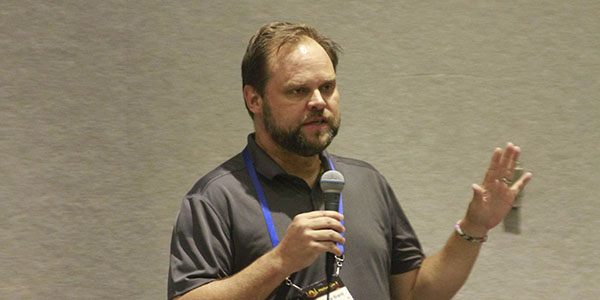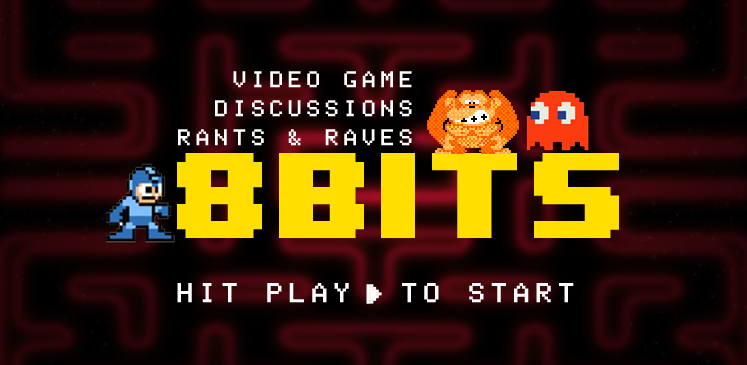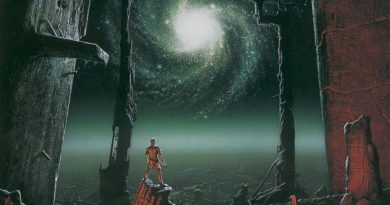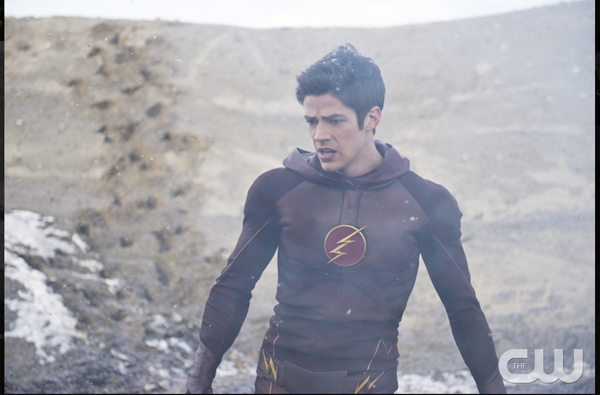Worldcon 74: Visual F/X with Bruce Branit

When we think of special effects, we tend to think of Hollywood. Or possibly New Zealand, home of Weta Digital. But Kansas City? Believe it or not, yes. A surprising number of movies and television shows have had FX work done right here by a man named Bruce Branit.
Branit has been a film buff since 1979. His older brother made movies, which he would sometimes star in. When he was 12, the family got an Apple II. Bruce took to it like a duck to water, writing science fiction stories, programming a keyboard-based pixel editor, and generally learning how to meld technology and art together.
Attending the University of Kansas, he majored in Chemical & Petroleum Engineering, then Architectural Engineering, then Architecture, then Philosophy before finally discovering Art. He won an art scholarship, where he got into industrial design. He planned to become an automobile designer for Ford — but then came the Video Toaster.
For you yunguns out there, the Toaster was a software suite for the Commodore Amiga computers that gave home computer users their first chance to create NTSC-quality video. It’s fair to say that a lot of careers began playing with the Toaster. Somehow, making cars suddenly didn’t seem that interesting anymore. Demo reel in hand, Bruce moved to Los Angeles.
After some time “making spaceships and blowing them up”, he decided to create some of his own stories. He teamed up up with a friend to make 405 (2000), which got downloaded 10 million times. And this was five years before YouTube.
On the success of this, he wrote a script called The Last Machine about nanotechnology, which never got picked up, though it still gets optioned to this day.
He went back to work on FX, working on shows such as Lost, Pushing Daisies, Fringe, and Breaking Bad (for which he received his sixth Emmy nomination). While working on Sin City, he realized he had access to everything Robert Rodriguez had, so why wasn’t he working on his own movies? He teamed up with his brother and made a short film called World Builder (2007). It told the story of two people separated by technology, looking for a human connection.
He has many other scripts in the works, many more stories of his own to tell. He hopes one day to be able to make them all. But in the meantime, there’s effects work to be done.
So, how does one produce Hollywood effects in Kansas City?
Each show starts with executive producer, the showrunner. Effects are run by a VFX producer and a supervisor. Basically the producer is in charge of cost and time, and supervisor in charge of the actual visual details. Four years ago, they were two separate people; today, it’s not at all unusual for them to be the same person.
First, there’s a table read of the script. All department heads make notes, then the VFX shop is called in. They are given the desired shots, then report back what they will cost, how long they will take, etc. Sometimes the VFX may impact the script, but this is rare. Once the script edit is “locked”, it becomes time to start compositing images with FX work. Then comes the cycle of notes and refinements. In the case of TV work, this can be a very tight loop indeed. TV timelines tend to be very compressed — Bruce’s personal record is for an X-Files shot submitted 36 hours before air time.
He went on to give a couple of examples of how shots are put together. Beware: Breaking Bad spoilers follow ….
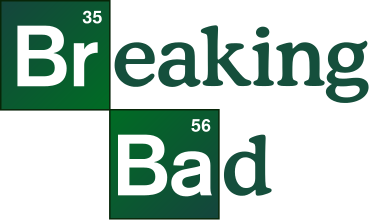
In episode 312 (“Half Measures”), they needed a shot of Walter White mowing down two drug dealers in a car. One had to go over the car, one under. After running a “ragdoll” simulation, Bruce found that the dealer going over the car would always get knocked ahead of the car, rather than tumbling over and behind it. Tests with mannequins at the studio itself found the same thing. Fortunately, he was able to “cheat” the forces of physics by putting the car, figures, and camera in his simulation at a 45-degree angle. Now, the character tumbled “back” over the car just as they had storyboarded.
Once this was established as working, the studio shot plates for the actors reacting without the car, then a plate of the car driving through (including sandbags on the ground where the car was going over the luckless second dealer). Then, a rough cut was made to make sure the rendered simulation would fit the filmed footage. The actors were made into 3-D models using reference photos which were wrapped over the digital characters, then the final composition was made, switching from the live actors to the CG ones just as the car comes through. Also, little touches such as a glint on a gun as it flies away, and one of the dealers’ bandannas floating away without him added to the verisimilitude of the shot.
In episode 413 (“Face Off”), character Gustavo “Gus” Fring is assassinated with a bomb. He steps out of the room apparently unharmed, but the camera slowly pans around to show that half of his face is basically gone before he collapses and dies. Principal photography started with a practical explosion with a locked-in-place camera. There then followed nineteen shots of the camera pan, as various timing and other technical difficulties were sorted out (including clearing the debris out of the way so that the camera could move in). Then, a “clean plate” — that is, without the characters — was made so they had something to put behind/through Gus’s missing chunks.
Next was a reference take of a sculpt (or “maquette”) for the carved-up face. Next, a silver ball for lighting reference. The maquette was sent to KC, where Bruce scanned it for geometry and digital insertion. Steaks from Hy-Vee were scanned for the “meaty” textures. Then, the CG mapping was overlaid onto the live shot with the background shot behind. For extra finishing touches, Bruce had the jawbone (which was disconnected) wiggle around a bit, added a little steam coming off the air, and even had an ocular nerve in Gus’s eye cavity moving around.
Talking about low budget and Indie film work, Bruce offered this advice: when it comes to visual effects, do you need it, and does it tell a story? The number one thing is keep it simple. Use what’s best for the job, and will get the job done most efficiently. It’s better to work in AfterEffects for 45 minutes than get stuck on shot day for 3 hours.
For budding FX artists, some of the tools Bruce and others in the field are readily available, sometimes even free. These include:
- Fusion: A high-end composition software package. Free download.
- Nuke: Another compositing package. Free tier for non-commercial use.
- Blender: 3-D graphics & animation software. Free & open source.
For more coverage on Worldcon, check out this link for articles and interviews.
Kelly Luck is rendered entirely in ASCII art. Her other SciFi4Me work can be read here.
![]()

